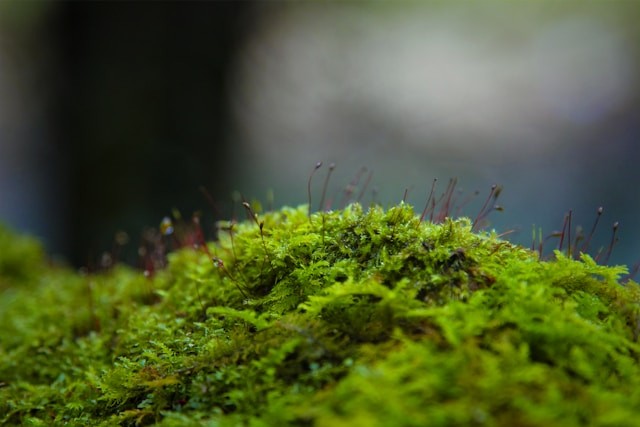Takakia is a rare kind of moss that has evolved over hundreds of millions of years to withstand the harsh conditions found on the Tibetan Plateau.
As one of the fastest-evolving species ever investigated, Takakia could have trouble adapting quickly enough to survive climate change, according to a team of experts who have been researching the moss for almost ten years.
Discovery of Takakia

(Photo : Ice tea/ via Unsplash)
For almost 150 years, scientists have been fascinated by it. Scientist William Mitten found tatakia in the Himalayas in the early 1860s, although he wasn't sure what it was at first.
Initially, he believed it might be a liverwort, a type of organism related to mosses but distinct from them.
Not until the 1990s did scientists discover that Takakia was, in fact, a moss. After then, they gave it a new name in recognition of scientist Noriwo Takaki, who was among the investigators that identified its special qualities.
Since then, researchers have been piecing together the organism's unique characteristics. According to molecular research, Takakia most likely split off from its previous, extinct evolutionary predecessors approximately 390 million years ago.
Also Read: Ancient Moss Brought Oxygen and Life to Earth
Ancient Moss Facing Modern Threats
Two species are found solely in the Tibetan Plateau, which scientists refer to as the roof of the world. Takakia is a genus that contains only two species.
In 2005, Professor Dr. Xuedong Li, one of the study's two original authors, found populations of Takakia at an elevation of more than 13,000 feet (4,000 meters). Since then, both on location and in the lab, the team has been researching the moss.
Eight months of the year are spent buried beneath a layer of snow, and when the snow finally lifts, Takakia is left exposed to intense UV radiation.
Over 65 million years have passed since continental drift established this area, during which time Takakia has evolved in this increasingly harsh habitat.
Since continental drift produced this area over 65 million years ago, Takakia has been evolving here, putting it in an increasingly harsh environment.
Studying Takakia's Habitat
Researchers have been measuring the temperature of Takakia's habitat since 2010, and they report an average annual temperature increase of nearly 0.5 degrees Celsius.
In the meantime, the glacier close to the sample locations is retreating at a startling rate of about 130 feet (50 meters) year.
Dr. Ralf Reski from the University of Freiburg and Dr. Yikun He from the Capital Normal University in China lead the study, and they explain that these geological time records assist us to follow the gradual adaptation to a life at high altitudes in the Takakia genome.
According to recent studies, moss has evolved a resistance to severe temperatures that could kill it.
Within a few years, the moss's environment has undergone significant alteration due to climate change, as documented in the study.
The discovery that Takakia's shape could be found in 165 million-year-old fossils from Inner Mongolia startled the team and showed that genetic modifications influencing shape originated more than 165 million years ago under drastically disparate circumstances.
Takakia is home to the fastest-evolving genes yet found and is, overall, about 390 million years old.
But even though the small moss has hundreds of millions of years to adapt to more drastic changes, climate change might put a stop to it.
They anticipate that between 2010 and 2021, Takakia populations' coverage declined by 1.6% yearly, more quickly than that of four nearby common mosses.
The significance of Takakia in tracking the evolution of land plants is demonstrated by our study. He claims that it is alarming to see the population fall.
Related article: Sphagnum Moss Found to Drastically Slow Down Rainwater Runoff in Peak District 'Outdoor Laboratory' Study
© 2024 NatureWorldNews.com All rights reserved. Do not reproduce without permission.



![Climate Change is Reducing Dust Levels Worldwide as Arctic Temperature Warms [Study]](https://1471793142.rsc.cdn77.org/data/thumbs/full/70320/280/157/50/40/climate-change-is-reducing-dust-levels-worldwide-as-arctic-temperature-warms-study.jpg)

